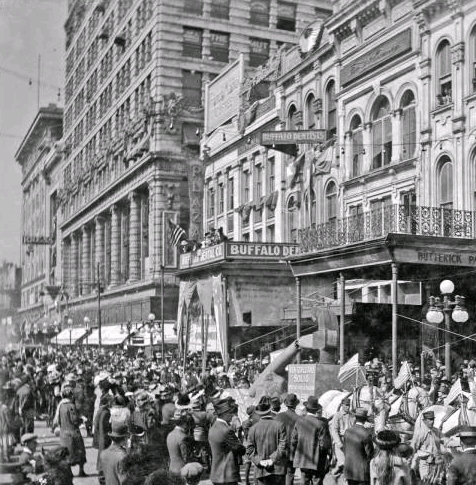|
Today in New Orleans History |
|
|
March 4



 

To receive an update for each day in New Orleans
history, join our facebook page
- Today in New Orleans History
Photo of Arthur J. Heyd, Superintendent of the New Orleans Fire Department, and Assistant Superintendent Louis J. San Salvador, March 4, 1969. Evarts Ambrose Graham was born on March 10, 1885, and died in St. Louis of cancer of the lung on
March 4, 1957. At the time of his death Dr. Graham was widely recognized as the leading surgeon of his day. He had
devoted many years to the study of cancer of the lung and, together with Dr. Alton Ochsner had pointed out the important role
of cigarette smoking in the cause of this disease. Credit: http://www.nap.edu/books/0309023491/html/220.html
|
|
|

To receive an update for each day in New Orleans history,
join our facebook page - Today in New
Orleans History.
Analytics |
 Carnival Day has been celebrated on this date in 2003 and 2014.
But this March 4, 1916 Times-Picayune photograph, taken on Canal Street near the Maison Blanche building, is not of a Mardi
Gras parade.
Carnival Day has been celebrated on this date in 2003 and 2014.
But this March 4, 1916 Times-Picayune photograph, taken on Canal Street near the Maison Blanche building, is not of a Mardi
Gras parade.
